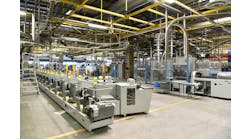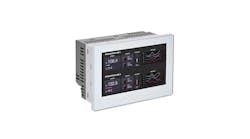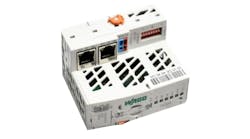Machine safety is well-defined and well-standardized. Many national and international safety specifications exist for protecting personnel from machine hazards. While standard safety relays and related safety devices work well to provide the protection from machine hazards, as the number of safety devices increases, programmable safety controllers become the more efficient and easy-to-use choice for machine safety.
There are many steps in specifying machine safety. Awareness of some key safety specifications, risk assessments and an online tool to help calculate the safety performance level will help to integrate the appropriate safety devices to a relay or safety controller.
There are many machine-safety specifications, each with the purpose of protecting all personnel from machine hazards. Unfortunately, there is not a single specification on machine safety. Some specifications focus more on the manufacture or use of the safety device itself, others more on risk assessment and yet even more on actual methods of machine safeguarding used.
Safety can require a subject-matter expert to get it right or, at a minimum, some training to even understand which of the many national and international safety standards to use.
To start on machine safety, a risk assessment is required. ANSI B11.0 – 2015 provides general requirements and risk assessment for the safety of machines. ANSI B11.19 focuses specifically on performance criteria for safeguarding, including interlocked guarding and light curtains.
A similar, but different, international safety specification ISO 13849-1 is used to determine the safety performance level (PL) for safety-related parts of the control system (SRP/CS) of the machine. And, to complicate things even more, there is EN 62061, which defines a protection level up to Safety Integrity Level 3 (SIL 3). Depending on the machine or system architecture, installation location and end-user standards requirements, there are at least three different machine safety protection level definitions.
Beyond how safe a machine needs to be, OSHA Specification 29 CFR 1910.212 provides general requirements for machine and point of operation; and the ANSI/NFPA 79-1991, Electrical Standard for Industrial Machinery, is a must-use standard in a machine control system. Based on the specific automation used, another to consider is ANSI/RIA R15.06-2012, Industrial Robots and Robot Systems.
Studying these safety standards will keep you busy for a bit. You'll find there is some overlap, and harmonization is occurring. The risk assessment may determine SRP/CS Category 3, PLd or SIL 2 is required to perform safety functions. Each provides similar safety capabilities.
Check out SISTEMA (Safety Integrity Software Tool for the Evaluation of Machine Applica- tions), a software tool to calculate PL. It's free and widely recognized. The SRP/CS includes the design of firmware and software. Different areas of a machine may require different safety categories, as well. It provides a recognized framework to follow global best practices during the safety-system design process and creates the documentation needed to validate the safety system.
Fortunately, the safety manufacturers provide a wide range of safety devices and controllers to help pull all the safety standards together in a complete system, as well. A good example of that is the safety controller.
What is a safety controller? A safety controller is a flexible and scalable machine safety solution that connects to safety devices and controls hazardous energy, providing configurable or programmable logic to protect personnel and machine from hazards that cannot be designed out of the machine.
With careful review, you'll find the safety controller meets most of the national and international requirements of safety categories, performance levels and safety integrity levels as part of a machine-safety control system.
Safety controllers are used in minor to complex safety applications and focus on the safety logic, not the machine logic. While safety relays work well for smaller systems needing just an emergency stop and a few guard switches, as the number of safety devices increase, the safety controller can simplify integration, operation and monitoring.
For example, wiring to the safety relay is all hardwired. Multiple emergency stops and guard switches are often connected in series in a single- or dual-monitored safety system. This works in many applications, but, as more devices are connected in series, it reduces the time to when a dangerous failure may occur based on the dangerous-failure calculations per ISO 13849-1.
The more devices in series, the less safe it is. Too many safety devices in series can also complicate diagnostics and monitoring of actuated safety devices.
Due to its modular hardware, a safety controller system can be expanded to have many direct wired safety device inputs and outputs. Simple logic functions (AND, OR) allow the safe inputs to be combined and used in a variety of ways within the safety controller. The logic programming and use of many different types of built-in safety functions enable the safety controller to protect the personnel and machine from most identified hazards.
With the safety devices wired to the safety controller, monitoring of the safety system is possible through both non-safe and safety rated communication methods. Much information on safety system status is available, so no discrete monitoring via PLC inputs in necessary.
The bottom line is you should consider using safety controllers if more than two safety relays or safety functions are needed for an application or if multiple safety zones are needed on a system. Learning the configuration or programming logic is not very complicated. Much information and examples are available online, and there are many vendors willing to help with the needed expertise. Take advantage of all the resources available and get control of your safety.






